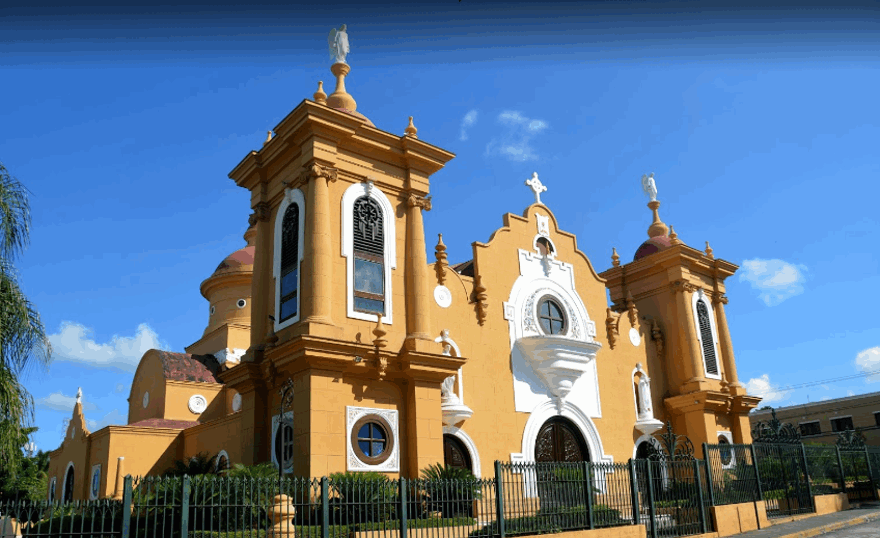
08 Jan What to Do in San Cristóbal
What to Do in San Cristóbal
San Cristóbal is one of the provinces in the Dominican Republic that is located in the south of the country and is part of the Valdesia region. Located at the foot of the Cordillera Central mountain range, San Cristóbal is located between the Nigua and Nizao rivers. Its location borders Santo Domingo to the east, Peravia to the west and San José de Ocoa to the northwest. This province was founded in 1932 and lives off industry, agriculture and tourism. Its crops include citrus fruits, coffee and onions.
If you decide to visit San Cristóbal, you should know that it’s one of the most touristy areas in the Dominican Republic, with an exciting culture whose magic should be experienced by everyone who visits the Dominican Republic. Its exotic beauty doesn’t end there, as its beaches are truly a slice of paradise that are bathed by the Caribbean Sea.
How to get to San Cristóbal
If you’re staying in Punta Cana, you can choose between different means of transportation to get to San Cristóbal.
The first option to consider is travelling there by bus, which can take around 3 hours in total, a fairly reasonable distance if you’re interested in exploring San Cristóbal. On the other hand, you can also choose to travel there by car, cutting down the travel time and thus being able to enjoy the rest of the municipalities that you’ll find along the way.
What to see in San Cristóbal
The province of San Cristóbal, as we said before, is a beautiful, cultural destination. We’ll give you a few recommendations on the spots you definitely can’t miss out on out of all the places you can visit.
Pomier Caves
The Cuevas del Pomier Anthropological Reserve is located in the province of San Cristóbal, just 7 km away from the city. It is a unique and very rare geological formation unlike any other in the world, since it consists of a series of caves of Miocene formation. This anthropological reserve contains prehistoric paintings and rock carvings that are classified as world heritage.
Source: ANoticias7
These caves are in turn made up of a total of 55 different caves, which are divided into rooms. Highlights include the room of the Grandes Edentados (big edentates), the Boinayel room, the Cohoba room and the Grandes Bloques room. If we go inside them, you’ll see that these four rooms have more than 4,000 pictographs and petroglyphs, which will make us appreciate this place of such high archaeological value even more.
One of the main points of interest is the collection of rock art that is housed inside. These paintings were created by the indigenous Taíno and Igneri people, who inhabited the island before the arrival of the Spanish in 1942 and they are more than 2,000 years old.
Within its nooks and crannies, you’ll find the cave dedicated to the spiritual rituals that was excavated by the Taínos in the Cohoba room, or the impressive cave dedicated to the worship of the God of Rain.
Without a doubt, the Pomier Caves will not only offer you a wonderful cultural experience, but an unforgettable memory as well.
Yaguate, one of the oldest towns in San Cristóbal
The town of Yaguate is located to the southwest of the province of San Cristóbal. It is one of the oldest towns in the area and was very important during the country’s pre-Columbian and colonial history.
Its name comes from the word “Yagua”, which means the upper part of a plant, and makes sense since Yaguate was where the first sugar factory in the New World was set up. Let’s not forget that today, sugar cane continues to be a source of income for its residents, just like the avocado plantations.
Among its interesting sites you’ll encounter during your visit is the hermitage of Boca Mana and that of El Conde, although of the latter only some stones remain.
Najayo Beach, the perfect place to enjoy some peace and quiet
If you travel to San Cristóbal, visiting Najayo Beach is a must. This beach is located on the Caribbean coast and is made up of greyish sand and small pebbles. Although the area has restaurants and bars, Najayo Beach isn’t frequented by very many tourists because it’s located in an industrial area. This will allow you to enjoy the peace and quiet that a place like this can offer and, above all, you can go for a swim in its crystal clear waters without being surrounded by very many people.
Palenque Beach, the beach of the palm trees
Just like Najayo Beach, Palenque Beach offers you a hideaway where you can enjoy the beauty of its landscape. This beach is surrounded by palm trees and is made up of dark sand, very similar to the one we mentioned before. This makes Palenque Beach in San Cristóbal a great alternative with its crystal clear, turquoise blue waters that you’ll fall in love with.




No Comments